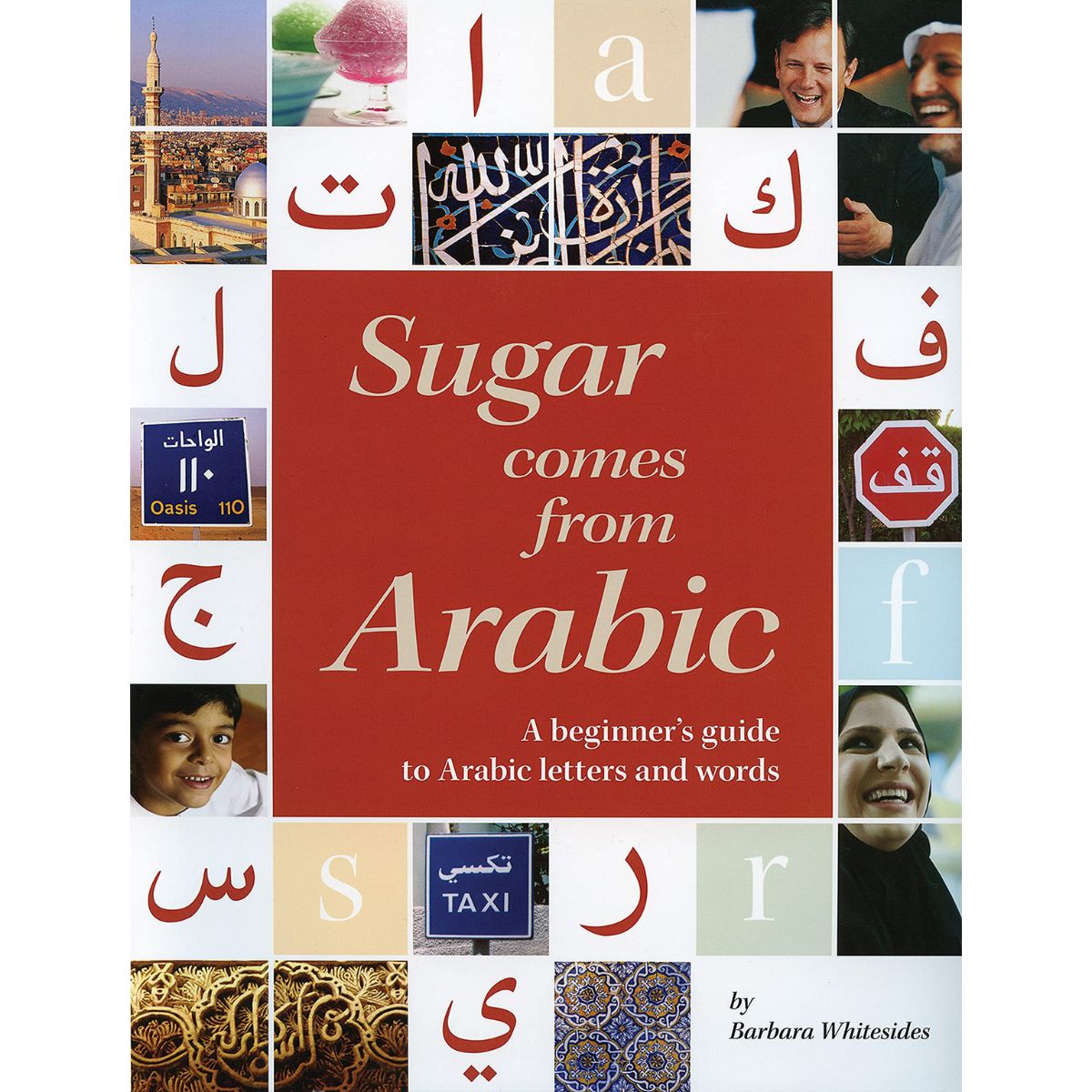Interlink
Couldn't load pickup availability
Sugar Comes from Arabic
By Barbara Whitesides
A user-friendly Arabic alphabet-and-culture book for complete beginners
"This book makes the Arabic alphabet much more approachable for the complete beginner, and can generate enthusiasm for expanded study of the language." -
-Paul Beran, Director, The Outreach Center, Center for Middle Eastern Studies, Harvard University
No other Arabic alphabet book demystifies the letters in such a comfortable way, by introducing them in English alphabetical order of the Roman alphabet and using the spelling of English names and words as a way to learn the Arabic. Look up matching letters, follow the directions, and soon you'll be writing your own name in Arabic!
Clear, concise illustrations show how to draw and remember each letter. Color photographs and explorations of individual words reveal important and often unrecognized connections between the West and the Arab world, such as the delicious gift of sugar.
Sugar Comes from Arabic is an exciting entry into the language of more than twenty countries and more than 300 million people. Simple stick-figure cartoons show you how to draw and remember each letter. Winning illustrations of words reveal important and too-often-unrecognized connections between our cultures, such as the delicious gift of sugar we received from the Arab world. This book is an irresistible way to raise cultural literacy.
Reading level: 9 and up
About the Author
Dr. Barbara Whitesides earned her B.A. from Harvard University and her Ph.D. in English literature from Rutgers University, and then taught at Wellesley College before becoming the news editor at Harvard Magazine. Barbara's interest in the Arabic alphabet was inspired by her grandfather, James Henry Breasted, America's first professor of Egyptology, who helped translate the seals on King Tut's tomb when it was discovered in 1922.
Barbara herself traveled to Egypt, where she fell in love with Arabic and began to study it at Harvard and with private tutors. But she found the existing Arabic alphabet books difficult to follow, and the script was always too small. It was hard to discern where one letter ended and the next started. She began to visualize the ideal book for the beginner, with large, colorful letters and step-by-step instructions on how to draw, connect, and pronounce them. She would teach readers how to write their own names in Arabic, and make the individual letters easy to find by presenting them in the same order as the English alphabet.
The methods used in this attractive book to simplify learning the letters include putting the Arabic letters in the order of the English alphabet and matching the two, and teaching the actual writing with step-by-step drawings that fade at the end of a letter so that readers can tell when the following letter begins. Color is used effectively with bold red and black letters from both alphabets.
Spiralbound: 136 pages
Publisher: Interlink
Language: English & Arabic
ISBN: 978-1566567572
Dimensions
Dimensions
Care Instructions
Care Instructions


